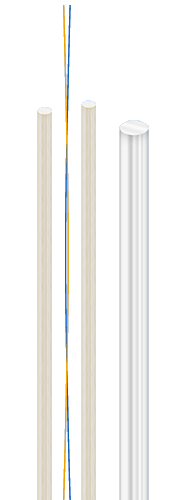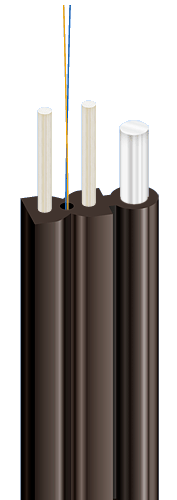ÎÊÐäÒ * 1 – 0.25
ÒÓ Ó 27.3-00214534-095:2017 |
| Distribution fiber-optic cables with a fiberglass strength element, with an outer sheath of flame retardant polymer compound and external steel strength element |
| Mark formation: |
| ÎÊÐäÒ -[b] [c]1(1x[e])-0.25 |
| [b] quantity of optical fibers in the cable, possible values |
| • 1, 2 |
| [c] type of optical fiber |
| • A – single-mode with extended wavelength band (ITU-T G.652D, ITU-T G.657A1) |
| • D - single-mode, not sensitive to losses on macro-bending (ITU-T G.657A2) |
| [e] quantity of optical fibers in the module: |
| • 1 ... 2 |
|
|
|
| Manufacturing of cables with armouring (aramid yarns and/or corrugated steel tape) is possible |
|
|
|
| Order placing: sample of indication (corresponds to configuration pattern) |
| ÎÊÐäÒ-2A1(1x2)-0.25 • ÒÓ Ó 27.3-00214534-095:2017 |
|
|
|
| Cables are used for: |
| • in areas with exclusive fire safety requirements |
| • for laying between supports, inside and between buildings |
| • for laying between the main line and the building |
| • for laying in places with effect of high electromagnetic field |
|
|
|
| Cables are available in either gel-filled or dry construction |
| The color of the optical fibers of the cable can be optional |
| Cable length marking on cable sheath is possible |
|
|
|
| Fire safety code in accordance with ÄÑÒÓ 4809:2007: ÏÁ103122000 |
| Products of this mark meet the requirements: |
| • single wire cable flame retardance |
| • toxicity class Tk3 of the combustion products of nonmetallic elements (toxicity index over 120 g/m3) |
| • class ÄÒê1 on smoke-forming ability by smouldering of non-metallic elements (coefficient of smoke formation from 50 to 500 m2/kg) |
| • class ÄÏê2 on smoke-forming ability by combustion (minimum luminous flux more than 60 %) |
| • corrosive class Êê2 of combustion products of non-metallic elements (the number of halogen hydrides less than 150 mg/g, pH more than 4.3, specific conductivity less than 10 µS/mm) |





































